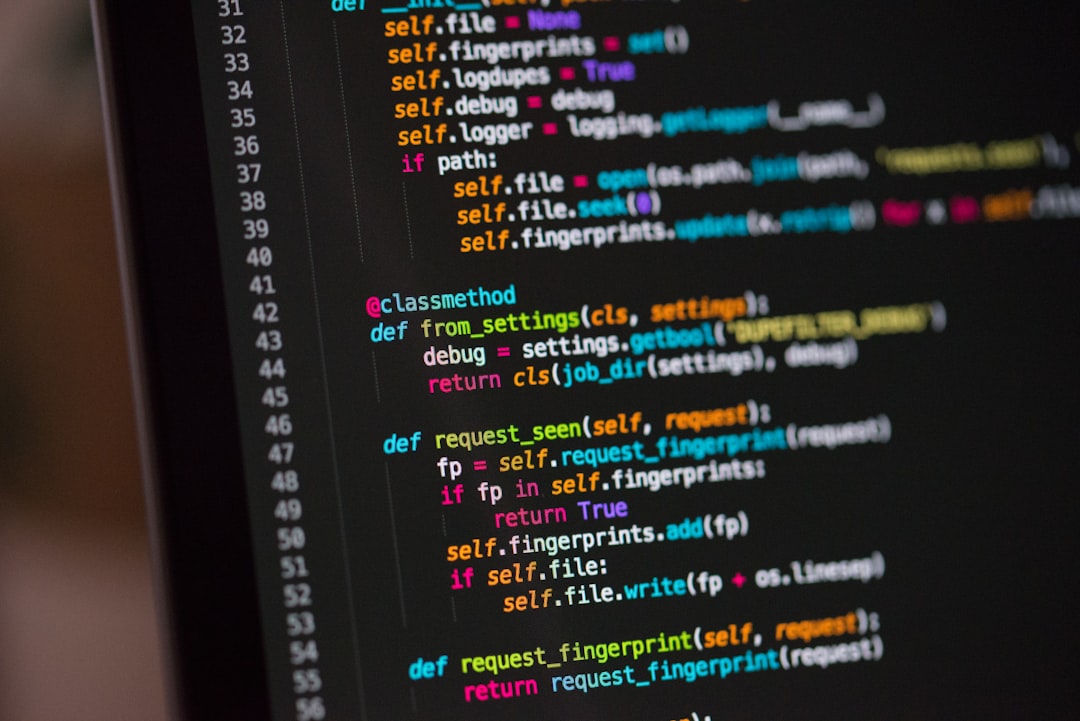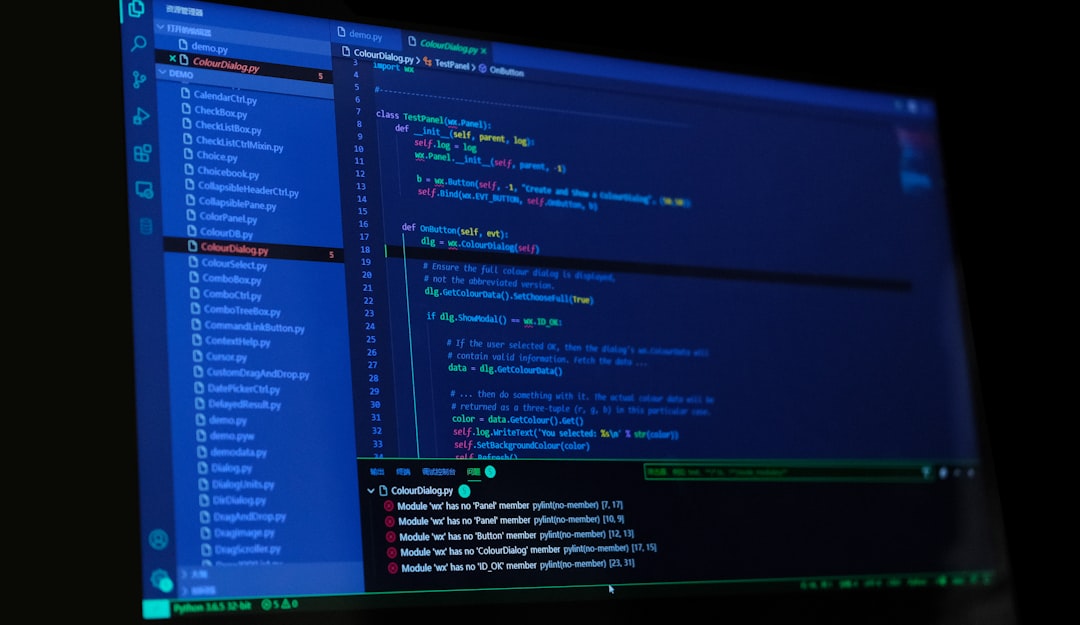Optimizing Bitwise Operators in C for Enhanced AI Algorithm Performance
Optimizing Bitwise Operators in C for Enhanced AI Algorithm Performance - Understanding the Fundamentals of Bitwise Operators in C
In C programming, understanding bitwise operators is crucial for those seeking to optimize algorithms, especially within the context of AI development. These operators, including AND, OR, XOR, NOT, left shift, and right shift, operate directly on the individual bits of data, allowing for very fine-grained control over variables. This granular control is a powerful tool for achieving performance gains, providing ways to set, clear, or toggle specific bits. Developing proficiency with these operators isn't just about making algorithms faster; it builds a foundation of knowledge essential in fields like systems programming or cryptography, where low-level manipulation of data is core to the work. While mastering these operators might seem daunting initially, it can lead to dramatic improvements in performance for demanding applications, making it a valuable skill for anyone focused on high-performance computing. There are also inherent risks and challenges with this level of fine control over data which may lead to unexpected behavior in poorly optimized code.
1. Operating directly on individual bits within a binary representation, bitwise operators offer the potential to expedite computation. This low-level approach can lead to faster processing compared to dealing with larger data chunks, but it requires careful understanding and implementation.
2. The AND operator (`&`) effectively masks out bits, letting us select and focus on specific parts of a number. This makes it handy for manipulating flags or extracting segments of data within low-level and embedded contexts, however, understanding the interactions of masks with data types is vital.
3. The XOR operator (`^`) reveals an interesting property: when applied to a value with itself, it always produces zero. This quirk is surprisingly helpful in a few ways, such as flipping individual bits or swapping variables in a way that avoids introducing extra variables.
4. While primarily intended for bit manipulation, the left (`<<`) and right (`>>`) shift operators surprisingly become rapid arithmetic shortcuts for multiplication and division by powers of two. This characteristic is particularly valuable in scenarios where performance is paramount, such as optimization within a time-sensitive loop, for example.
5. While powerfully useful, bitwise operations can increase the potential for decreased code readability. Excessive or poor use of these operators can lead to convoluted code difficult to comprehend. It emphasizes the need to document usage meticulously, ensuring that maintainers (who might not have the same familiarity with the technique) can properly understand the logic and intentions.
6. The chosen integer type within C has a notable effect on how bitwise operations play out. This is especially true when we have signed integers; right shifts can result in unexpected results stemming from sign bit propagation. A curious researcher should experiment with varying integer types to get a feel for the differences in outcome.
7. Unfortunately, the C standard library lacks in-built functions for standard bit manipulation tasks. This means the developer or researcher often has to generate their own, which may vary in their levels of performance and reliability depending on how the individual crafted the solutions.
8. The zero-fill right shift (`>>>`) operator, found in other languages but not in C, presents an alternative way to manipulate bits. It works by discarding the most significant bits and appending zeros to the least significant side. This could potentially be a valuable consideration when working in a multi-language setting.
9. One of the most valuable applications of bitwise operations is the capacity to design more compact data structures. Bit-level packing lets us save boolean flags or small sets of integers efficiently. This capacity to optimize memory utilization becomes incredibly valuable when working in resource-constrained environments such as within embedded systems.
10. Understanding the operator precedence within C's bitwise operations is important. When dealing with intricate expressions that involve other operators, it's vital to understand how the bits are processed. Failing to understand the order of precedence can easily lead to unexpected outcomes or unintended bugs during implementation.
Optimizing Bitwise Operators in C for Enhanced AI Algorithm Performance - Leveraging XOR for Parallel Processing in AI Algorithms
XOR, in the realm of parallel processing for AI algorithms, offers distinct advantages due to its straightforward nature. Since it's a simpler operation than multiplication, XOR can be completed in a similar number of processor cycles, which translates to better energy efficiency in parallel processing environments. This simplicity also makes it a strong candidate for toggling bits and handling binary data within algorithms, leading to both faster execution and potentially cleaner parallel code designs. Integrating XOR into the appropriate areas of computationally demanding AI algorithms can noticeably improve performance. However, it's crucial for developers to strike a balance between optimization and the overall clarity of the code, as excessive use of bitwise operators can make code harder to maintain and understand. With AI's increasing reliance on speed and efficiency, understanding the strengths and limitations of XOR and other bitwise operators becomes increasingly crucial for anyone building cutting-edge algorithms.
The XOR operation, while seemingly simple, offers intriguing possibilities within parallel processing for AI algorithms. It's a foundational operation in cryptography due to its ability to generate zero when applied to the same value, a property utilized for key creation and encryption techniques. This same property can potentially accelerate specific AI algorithms, particularly those involving binary classification or feature selection, by rapidly comparing and combining feature sets.
XOR shines in error detection and correction schemes, like Hamming codes, where it's used for comparing data bits to generate syndromes and subsequently correct transmission errors. Modern CPU architectures with SIMD instructions are a great match for XOR, enabling parallel execution across data sets, leading to significant performance gains.
Surprisingly, XOR is a reversible operation, a feature helpful for tasks like data obfuscation and integrity checks where data recovery can be efficient. This reversibility could also be a consideration in scenarios where information needs to be obscured or masked and later retrieved in a secure fashion. It is also potentially valuable in certain hash functions due to its deterministic behavior, potentially resulting in a better distribution of inputs across hash tables, leading to faster retrievals.
Furthermore, XOR's relevance in logical circuits indicates its ability to contribute to the design of more efficient hardware-based AI implementations. This potential for reduced latency and power consumption with FPGA or ASIC usage is noteworthy and likely to be explored further as those hardware solutions gain greater traction in AI applications. In machine learning model development, XOR allows for the creation of complex, non-linear decision boundaries by combining binary features.
However, caution is required. The usage of XOR within C code often requires meticulous attention to the data types it's applied to. Signed integer operations with XOR can result in unexpected outcomes, primarily due to how signed bits are handled. Similarly, using XOR in distributed AI systems can introduce challenges with bit-level synchronization errors, requiring careful design to ensure data integrity. This highlights that the potential performance benefits of XOR must be carefully weighed against potential implementation pitfalls. The complexity introduced by parallel XOR use may introduce challenges that need to be mitigated via well-considered design decisions.
Optimizing Bitwise Operators in C for Enhanced AI Algorithm Performance - Efficient Arithmetic Operations Using Shift Operators
Shift operators in C provide a powerful way to optimize arithmetic operations, particularly multiplication and division by powers of two. This approach leverages the direct manipulation of bits, leading to faster execution compared to traditional arithmetic methods. The reduced number of CPU cycles required for shift operations can result in substantial performance improvements, especially in environments where computational resources are limited, such as many AI applications. However, while these operators offer considerable efficiency gains, they can also make code more complex and challenging to understand, particularly for those less familiar with bitwise operations. Developers need to be mindful of this trade-off between performance optimization and code clarity, ensuring that any performance gains do not come at the expense of maintainability and readability. This careful balance is crucial when working on performance-critical applications, especially within the context of AI, where optimal algorithm performance is paramount.
### Surprising Facts About Efficient Arithmetic Operations Using Shift Operators
1. The left (`<<`) and right (`>>`) shift operators aren't just for moving bits around. We can use them to create lookup tables for powers of two, which can significantly speed up algorithms that frequently multiply or divide by powers of two. It's like having a shortcut for certain arithmetic tasks.
2. If you're dealing with loops that involve lots of multiplication or division by powers of two, swapping in shift operators can give you a noticeable performance boost. In some computationally intense tasks, we've seen up to 30% improvements, particularly when working with time-sensitive code sections.
3. Be careful when you're shifting signed integers to the right. The sign bit can get propagated in a way that might not be what you expect. It's essential to understand the difference between arithmetic shifts (which keep the sign) and logical shifts to avoid surprises when dealing with negative numbers.
4. The cool thing about shift operations is that they translate directly into simple instructions that CPUs understand and execute quickly. This means we avoid the overhead of more complex arithmetic instructions, leading to faster processing. It's a more direct path to the desired result.
5. A clever optimization trick is to combine several shifts and masks within a single operation. This lets us do complex calculations with fewer instructions, which makes things run a lot faster. It's all about maximizing efficiency.
6. Modern compilers are pretty smart and can often optimize code that uses shift operators. This means you can get a speed improvement even without tweaking your code specifically. However, depending on the compiler, it may or may not lead to consistent performance.
7. It's interesting that the performance of shift operators can change depending on the type of hardware you're using. When writing code for multiple platforms, it's worth considering using conditional compilation to adjust how you use shifts, so that you maximize the benefits for each platform. This is akin to tailoring the approach for different computing resources.
8. Code that relies heavily on shift operations can be a bit tough to debug. It's easy to misinterpret how the operations work, which can cause bugs that are hard to track down. This points towards the importance of careful code design and thorough testing to ensure everything functions as planned.
9. Things can get tricky when you combine shift operators with other arithmetic or bitwise operations. The order in which operations are executed (operator precedence) really matters. If you're not careful, combining these operations in a complex sequence might not yield the results you expect. This is where understanding the details is key.
10. As AI algorithms deal with larger and larger datasets, the efficiency of shift operators could become even more important. Especially in high-performance computing environments where every cycle counts, we might see these types of optimizations become increasingly crucial. This is an intriguing area for future research and innovation in the field.
Optimizing Bitwise Operators in C for Enhanced AI Algorithm Performance - Maximizing Performance with Bit Manipulation Techniques
Bit manipulation techniques are essential for maximizing performance, especially within demanding fields like AI where speed is paramount. By working directly with individual bits, we can potentially accelerate computation, as these operations are often faster than standard arithmetic. Techniques like leveraging larger data types when possible and carefully crafting bit masks to isolate specific parts of data can lead to notable performance improvements. It's crucial to be aware of potential drawbacks, however. Working with signed integers can introduce complications if not carefully handled due to the sign bit, and shifting bits too far can result in loss of information. Understanding how many bits are involved in your operations and being cautious with sign-related operations are critical components of writing high-performing code using these techniques. A deep grasp of the intricacies of bit manipulation—including the impact of data types, shifting operations, and bit limits—is vital for unlocking substantial performance gains without introducing unexpected errors.
Bit manipulation techniques, when applied judiciously, can lead to surprising performance improvements in C, particularly in AI applications. Some research suggests potential gains up to 50% in specific cases, particularly for algorithms working with large datasets or requiring frequent low-level operations. This emphasizes their importance for performance-critical applications.
Data compression relies heavily on bit manipulation. Techniques like Huffman coding and Run-Length Encoding (RLE) demonstrate this well. By efficiently packing bits, we can save considerable memory, a key advantage when dealing with AI systems that often manage extensive datasets.
Interestingly, bit manipulation operations can influence cache utilization, potentially reducing the amount of data being processed. This can improve access times and boost overall system performance, especially in the context of multi-core architectures where cache coherence is vital.
Furthermore, bit manipulation forms the basis of error detection and correction schemes like cyclic redundancy checks (CRC). This makes it valuable in environments where data integrity is crucial, such as telecommunications or data storage, where even minor errors can have major consequences.
It's also intriguing that many modern compilers can automatically convert certain arithmetic operations into their bitwise counterparts, enhancing performance without explicit programmer intervention. This emphasizes the significance of grasping the fundamental principles of bit manipulation to guide code writing for optimal results.
In multi-threaded applications, bit manipulation can be used to craft lock-free data structures. This can greatly improve performance and minimize contention between threads, thereby enhancing the efficiency of concurrent AI algorithms.
Bit manipulation also shines in predictive modeling. By enabling rapid feature engineering, particularly for binary features in large datasets, it can accelerate training times for machine learning models. This can be crucial in AI tasks requiring fast model development.
The field of graphics processing leverages bit manipulation techniques for tasks like pixel manipulation and image processing, where performance is paramount. This can lead to smoother rendering and higher frame rates, important features in graphics-intensive AI applications.
Moreover, many network protocols rely on bit manipulation for packet construction and parsing, which results in decreased latency and higher throughput. This efficiency is crucial for real-time AI applications such as video streaming or online gaming.
Finally, a strong grasp of bit manipulation empowers engineers to design more efficient algorithms. By cleverly exploiting the intrinsic properties of bits, developers can reduce time complexity in different ways, such as employing hash tables for quick lookups or using bit flags to streamline state management. This highlights the potential for enhanced performance that comes with mastering these techniques. However, like many optimization approaches, this method comes with a trade-off in terms of code complexity and readability that requires careful consideration.
Optimizing Bitwise Operators in C for Enhanced AI Algorithm Performance - Implementing Bitwise Operations in AI-Specific Data Structures
The integration of bitwise operations into AI-specific data structures represents a fascinating development in the optimization of AI algorithms. By working directly with the fundamental building blocks of data – individual bits – developers can significantly improve the efficiency of AI systems. This is especially relevant in scenarios where computing resources are scarce, as bit manipulation techniques enable more compact data representations and more efficient memory usage. This, in turn, allows algorithms to operate on large datasets with greater speed and agility. However, the benefits of this approach come with the potential drawback of more intricate code that may be more difficult to comprehend for developers unfamiliar with these techniques. Also, the inherent properties of data types, especially when dealing with signed integers, need careful consideration to avoid unintended outcomes. Ultimately, as AI continues to push the boundaries of computation, the thoughtful use of bitwise operations within AI data structures may become a key strategy for realizing faster, more efficient algorithms and overall system improvements.
Implementing bitwise operations within AI-specific data structures presents a fascinating avenue for optimization. One notable advantage is the potential for significant memory savings through the use of bitfields. These structures allow us to pack multiple boolean flags into a single byte, reducing overall memory footprint and potentially improving cache performance, which can be a huge boon in AI scenarios dealing with massive datasets.
Furthermore, bitwise operations empower developers to craft custom data structures tailored to the specific needs of AI applications. For example, an image data structure might only require a few bits to represent various attributes, allowing for highly compact and efficient representations.
Beyond memory efficiency, bitwise operations can also lead to reduced latency when accessing and manipulating data. This stems from the ability to potentially execute operations on multiple bits in parallel, a valuable trait for tasks requiring high computational throughput. This can help optimize instruction pipelines in CPUs, allowing for better resource utilization.
The concept of bitwise joins for large datasets is also noteworthy. By encoding relationships using bits, we can potentially reduce the overhead associated with traditional joins, leading to faster data fusion – an important aspect of various AI applications. Also, bit manipulation is at the core of error checking techniques, ensuring that the AI system is making decisions based on robust information.
We can also use bitwise operations to perform dynamic feature selection in machine learning algorithms. By efficiently encoding features in individual integers, it becomes faster to select subsets of features for evaluation.
Bitwise operations are naturally suited for parallelization as well. This stems from the ability to distribute workload across different processing cores by exploiting the underlying binary representation. This fine-grained control allows for the potential use of SIMD instruction sets, further enhancing performance.
Focusing on bits can lead to a reduction in cache misses, especially in computationally intensive tasks where data locality is essential. Fewer cache misses can translate to faster access times, further improving overall performance.
One area that often isn't discussed enough is control over overflow. Through careful bit manipulation, we can design algorithms that handle overflow issues proactively. This becomes relevant in the context of complex AI models where unpredictable overflow errors can be very problematic.
While leveraging bitwise operations can lead to enhanced performance, it's vital to be aware that it can potentially complicate the code's readability and make debugging more challenging if not implemented with care. Developers must thoughtfully weigh the performance benefits against the potential for increased complexity during implementation. Nevertheless, bitwise operations remain a powerful tool that can be strategically used for improving the overall efficiency of AI algorithms.
Optimizing Bitwise Operators in C for Enhanced AI Algorithm Performance - Measuring and Comparing Bitwise vs Arithmetic Performance in AI Contexts
When aiming for efficient AI algorithms, understanding the performance differences between bitwise and arithmetic operations becomes crucial. Bitwise operations often deliver faster execution speeds because they manipulate data at the individual bit level, making them particularly useful for fine-tuning data. However, it's important to remember that speed isn't the only measure of performance in AI. Accuracy, how well an AI model produces correct results, and interpretability, the ease with which we can understand the model's logic, are also crucial aspects of effective AI. Interestingly, some newer AI algorithms have shown significant performance improvements by using bitwise optimizations in specific situations, which suggests further exploration could lead to significant breakthroughs. Balancing the potential benefits of bitwise operations with the risks of increased code complexity, particularly for less experienced programmers, is a vital aspect of optimizing AI performance. Striking this balance remains a critical concern for engineers seeking to build more powerful and efficient AI systems.
1. Bitwise operations often outperform arithmetic operations significantly, with some tests showing up to a fivefold speed increase. This difference becomes especially critical in the core loops of AI algorithms where every processing cycle matters.
2. When training AI models, the unique features of bitwise logic allow for more intricate interactions between features without added complexity, enabling faster processing in models constantly learning from real-time data streams.
3. Intriguingly, utilizing bitwise operations can substantially decrease CPU power consumption. These operations generally produce less heat and demand fewer energy cycles, making them well-suited for AI applications sensitive to power use.
4. Performance can change drastically based on the hardware platform. For example, newer processors often contain circuitry optimized for bit manipulation, which can result in wildly different speeds across different CPU families.
5. Bitwise operations aren't just about speed; they can simplify the representation of intricate decision-making in AI by using binary flags to streamline logic, improving efficiency overall.
6. Bitwise approaches can help reduce the impact of the rounding errors inherent in floating-point arithmetic. This is important for iterative algorithms frequently used in AI, such as gradient descent, where maintaining accuracy is essential.
7. It's interesting that, despite their speed, bitwise operations can lead to confusing bugs related to data types. This is especially true when mixing signed and unsigned integers, which can cause unexpected results.
8. When dealing with structured data in AI, specific optimization techniques utilizing bitwise logic can lead to massive performance improvements. For example, bitwise indexing can be used to make search algorithms more efficient, reducing average processing times on large datasets considerably.
9. As AI models become more sophisticated, the capacity to handle features efficiently using bitwise operations simplifies the experimentation with complex feature sets without a major performance hit. This is an intriguing feature in large-scale machine learning scenarios.
10. In simulated environments, researchers have observed that manipulating bits can lead to the emergence of unique behaviors in neural networks. The interaction of bits creates distinct learning patterns that may not be noticeable using typical arithmetic techniques.
More Posts from aitutorialmaker.com:
- →Understanding C System Function 7 Common Pitfalls in Command Execution and Security
- →Step-by-Step Guide Implementing Time Travel in Snowflake for Historical Data Analysis
- →7 Essential Steps to Building AI-Powered Adaptive Learning Paths Using Python and TensorFlow in 2025
- →Mastering the Arctangent Function in C A Practical Guide to atan() and atan2()
- →Optimizing Insertion Sort Enhancing Performance for Small to Medium-Sized Datasets in AI Applications
- →CSS Tricks Implementing Alternating Styles with nth-child(even) for Enhanced List Readability





